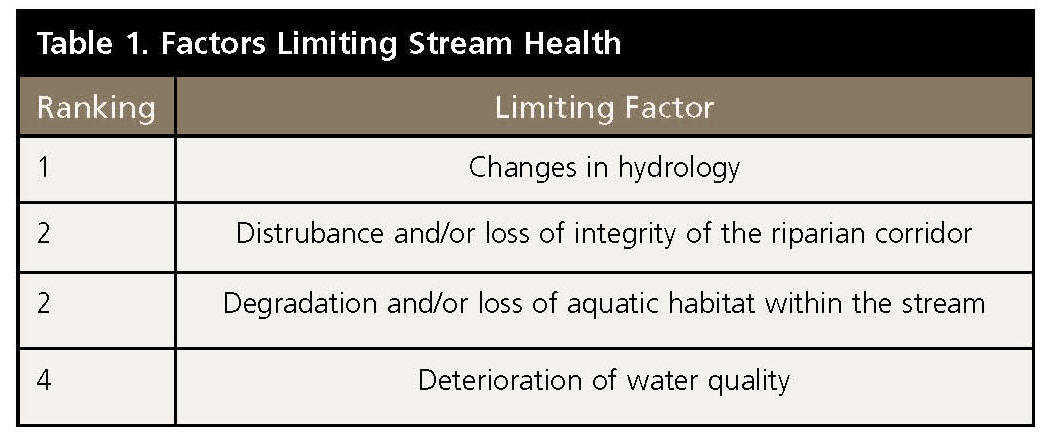Inter-Regional Education Initiative: A Road Map for Integrated Watershed Management
Washington State Research Informs Managing Drainage from an Ecological Perspective in British Columbia
“In 1996, the Center for Urban Water Resources Management Center at the University of Washington (in Seattle) published the seminal paperEffects of Urbanization on Small Streams in the Puget Sound Lowland Ecoregion. Co-authored by Richard Horner and Chris May, this shook conventional stormwater management wisdom in the Pacific Northwest to its foundation,” states Peter Law, Partnership Director. Formerly with the BC Ministry of Environment, he was Chair of the Steering Committee that was responsible for development of Stormwater Planning: A Guidebook for British Columbia, released in 2002.
Limiting Factors for Stream Health
 “Horner and May synthesized a decade of Puget Sound research to identify the factors that degrade urban streams and negatively influence aquatic productivity and fish survival. They demonstrated that four factors limit stream health. The order-of-priority for these factors provides a ‘road map’ for rainwater management in a watershed sustainability context.”
“Horner and May synthesized a decade of Puget Sound research to identify the factors that degrade urban streams and negatively influence aquatic productivity and fish survival. They demonstrated that four factors limit stream health. The order-of-priority for these factors provides a ‘road map’ for rainwater management in a watershed sustainability context.”
“An understanding of what the order-of-priority of the four factors means for stream health is a foundation piece for managing drainage from an ecological perspective.”
Impact of Changes in Hydrology
“If the goal is protection of aquatic resources, it proved that a water quality driven program would not achieve the goal,” continues Peter Law. “Two key messages flowed from the Horner and May research: salmon would already be gone by the time pollutant loading is a factor in salmon survivability; if we get the hydrology right, water quality typically takes care of itself.”
“The stream health findings by Horner and May gave us a springboard to ‘reinvent urban hydrology’. Released by the Province in June 2002, Stormwater Planning: A Guidebook for British Columbia is a transformational document. It quickly became a catalyst to implement a ‘design with nature’ approach to rainwater management and green infrastructure.”
“This early research established that ~10% impervious cover is a threshold level at which fisheries biodiversity and abundance are initially and significantly impacted. By ~30% impervious cover, most urban watersheds in the Pacific Northwest may be unable to sustain abundant self-supporting populations of cold-water fish,” concludes Peter Law.
To Learn More:
Click on The Cumulative Impacts of Watershed Urbanization on Stream-Riparian Ecosystems to read an article published by Richard Horner and Chris May in 1999.
Click on Core Concepts for Stream Health and Performance Monitoring – May 2013 for a synthesis of the Washington State research that has informed and provided a starting point for the Georgia Basin Inter-Regional Education Initiative.
Also, click on Rainwater Management in a Watershed Context – What’s the Goal? published by Stormwater Magazine in November 2011. This elaborates on how British Columbian practitioners have built on the science-based understanding that resulted from the landmark research by Richard Horner and Chris May in the late 1990s.



